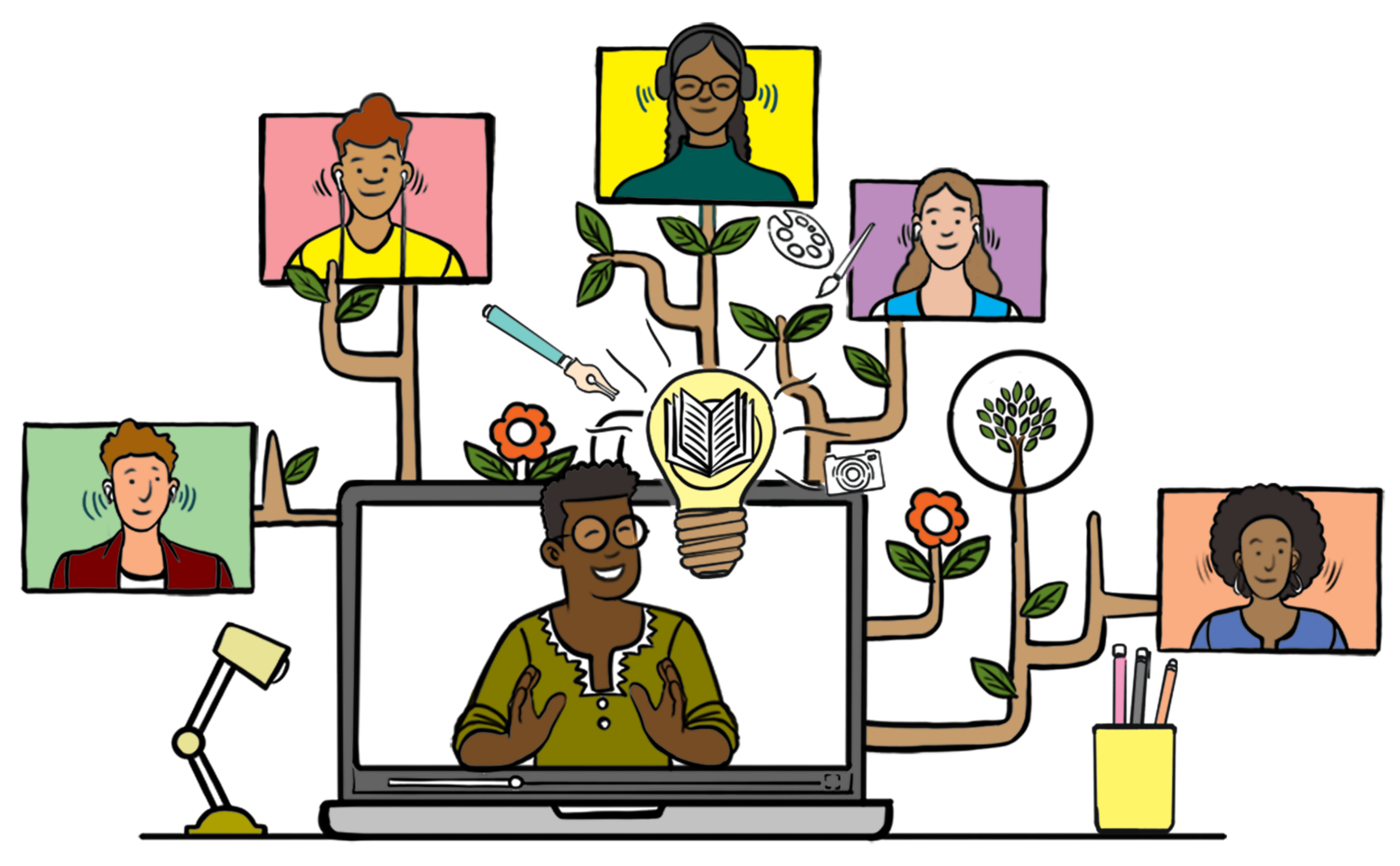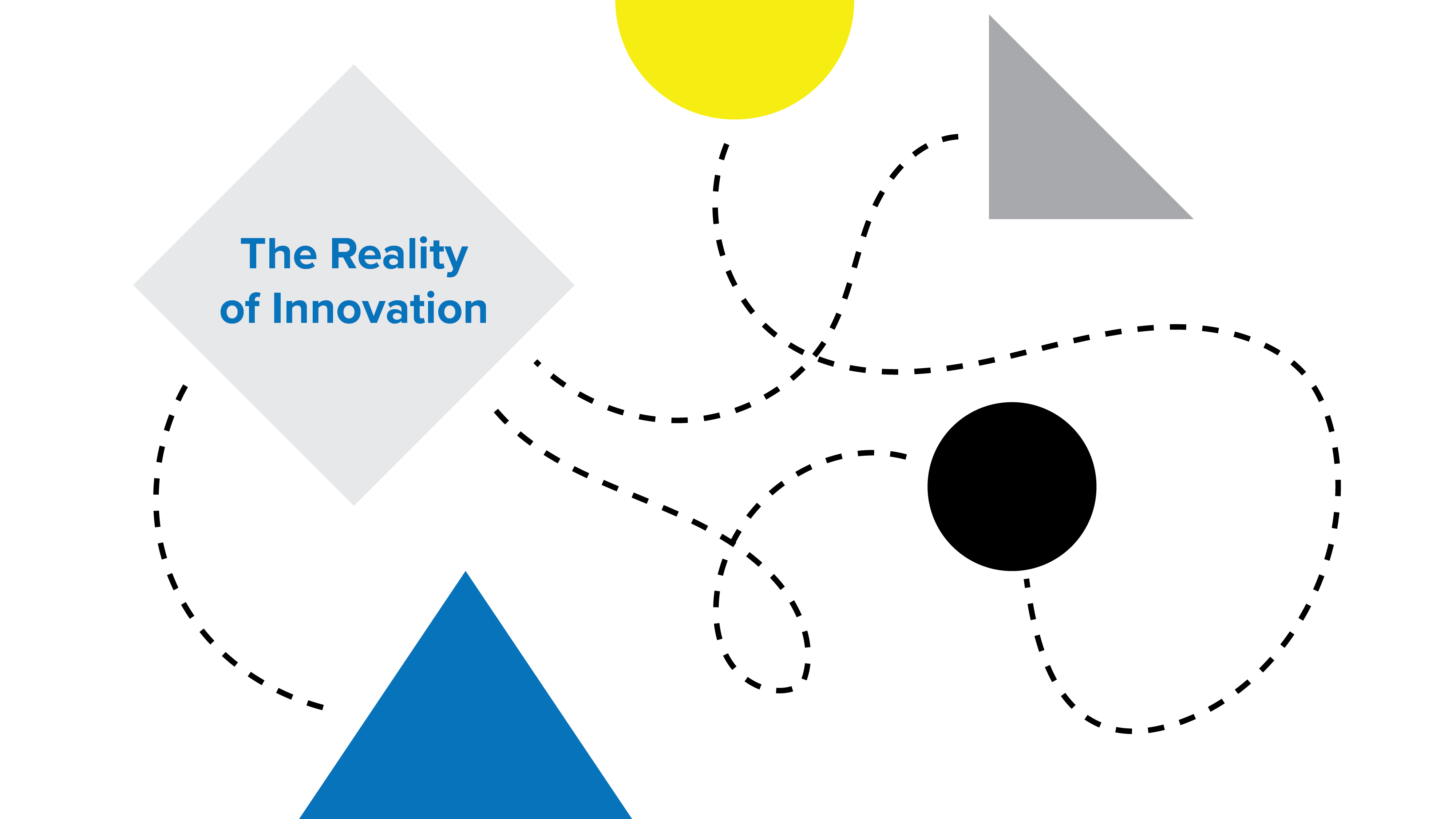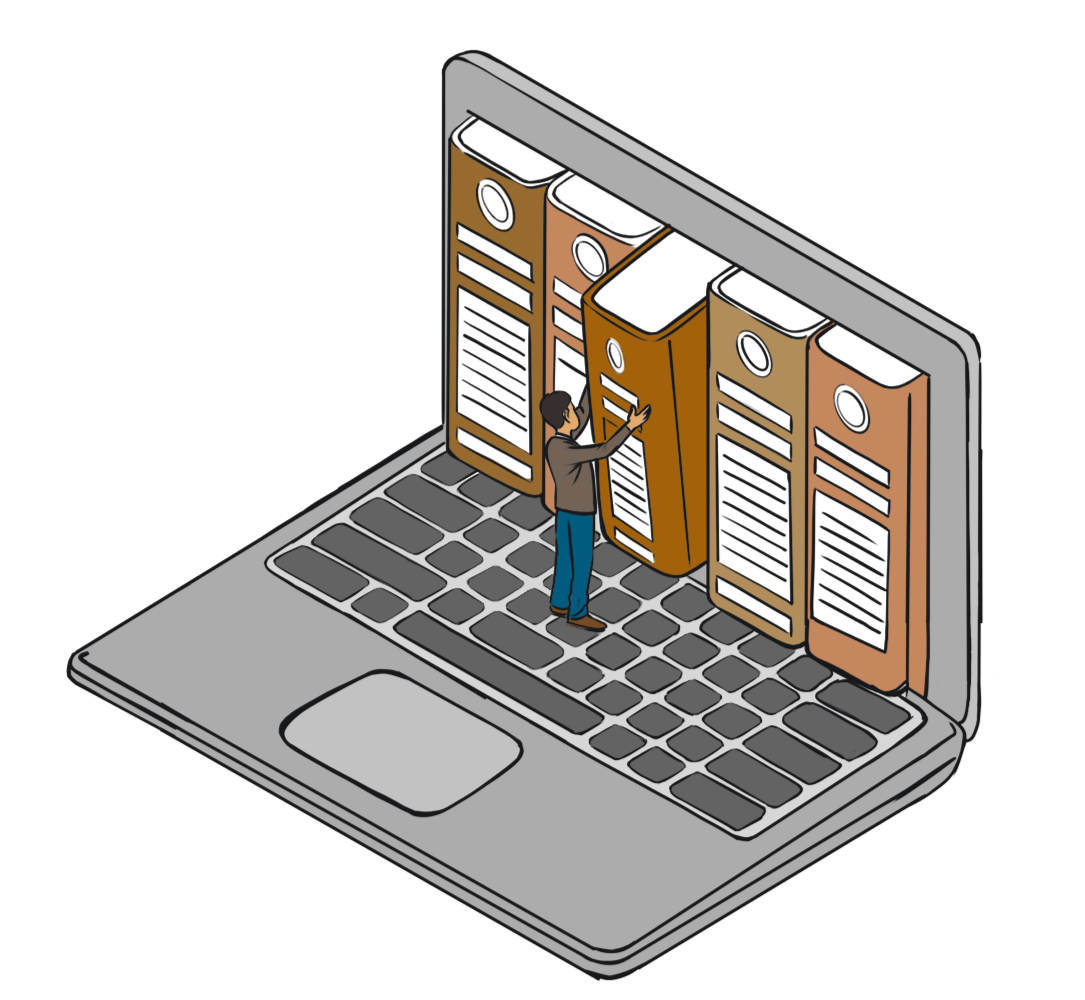
Greetings, innovator!
Got a problem you want to solve? Keen to expand your understanding of innovation processes, methods, and mindsets? You’re in luck!
The purpose of this page is to provide resources that will help guide aspiring innovators (like you!) on the innovation journey.
ABCs of Innovation
Before we start delving into the innovation journey and associated resources, it’s helpful to have a shared understanding of certain terms that we – and other innovators – use.
The Innovation Service has developed an Innovation Glossary to define these terms and ensure we’re on the same page.
To access the Innovation Glossary, click the button below.
Innovation process and helpful tools
Innovating is never a straightforward journey. You might think you’ll take a linear path: identifying a problem, exploring how to solve it, then scaling or institutionalizing the successful solution. More often, though, this journey will involve unexpected twists and turns! Having to return to your challenge definition or adapt your experimentation approach are all part of the process.

Nevertheless, to simplify the guidance provided here, and to neatly categorize the innovation resources, we’ve split this complex process into three main steps: challenge definition, ideation, and experimentation.
For each of these steps, we provide a brief explanation, resources to help you with this step, and a checklist so you can assess if you’ve effectively completed it.
1. Challenge definition
Defining your challenge is one of the most critical steps in the innovation process. Developing a good challenge statement or question will help determine the focus of your work and shape the rest of your innovation journey. Once you have this foundational definition in place, you will be able to return to it to ensure you are staying on task. Remember: you might need to tweak your original challenge definition several times before you have accurately articulated the problem you’re seeking to address.
Resources:
-
5 whys technique – A tool for getting to the root cause of a problem
-
DIY toolkit – Problem definition guidance
-
DIY toolkit video – An explanation of the toolkit
Checklist:
Once you’ve drafted and refined your challenge statement/question, check that it:
-
Is only one sentence
-
Contains only one challenge
-
Does not hint at, or include, a path to a solution
-
Has an appropriate level of abstraction
-
Is clear and unambiguous.
An example of a good problem question might be: How could we accurately predict the number of children separated from their parents in a displacement crisis?
2. Ideation
With your newly defined challenge in hand, you can start the process of ideation – discovering or creating many ideas collaboratively. Bring together people with different backgrounds and expertise – particularly those who will be using your eventual solution – to generate ideas. Aim for quantity over quality.
Resources:
-
IDEO Design Kit – 7 rules for a more effective brainstorm
-
Envato – Guide to better brainstorming techniques
-
Brainstorming rules – Ways to guide your brainstorming
Checklist:
-
Have you checked what kind of solutions to your problem already exist?
-
Do members of your brainstorm bring diverse personal and professional perspectives?
-
Have members of affected communities been engaged?
-
Do you have an experienced facilitator for your idea generation session?
3. Experimentation
Now it’s time to test some of the solutions you’ve dreamed up. Keep it simple. Find out how you can run quick experiments to test different solutions (or parts of them) with the communities you’re working with. Continue iterating and refining your solution along the way, based on the results of this experimentation. Remember: getting feedback from relevant communities is essential. Ensure you’re engaging with them throughout this process.
Resources:
-
UNHCR Innovation – Why there’s no innovation without experimentation
-
IDEO Design Kit – Live prototyping
-
IDEO Design Kit – Keep iterating
-
IDEO Design Kit – How to pilot an idea
-
Bromford Lab – Testing vs piloting
Checklist:
-
Have you identified the key elements and assumptions you want to test?
-
Have you engaged with affected communities throughout the process?
-
Have you worked through several iterations of your solution?
-
Have you documented your experimentation process well?
-
Have you identified key learnings, successes, and failures?
Innovation inspiration
In addition to the above process-specific tools, there are a number of other places you can reliably expect to find innovation inspiration.
If you’re looking for new ways to think about and address a problem, or new tools to design innovative solutions, we recommend you explore the resources provided by:
-
IDEO.org – A nonprofit design studio focused on social justice.
-
DesignKit by IDEO.org – An easy-to-use guide to inspire your innovation journey.
-
The d.school – A design community within Stanford University.
-
Nesta – An innovation agency for social good.
If you’re a member of the UN family or a partner organization, we suggest you also take advantage of the courses, resources, and community provided through:
-
The UN Innovation Toolkit – Tools, worksheets, case studies, and self-assessments to identify strengths and areas for improvement.
-
The UN 2.0 Quintet of Change – Innovation is a key pillar of UN 2.0. Learn more and take related courses.
-
The UN Innovation Network – an informal, collaborative community of innovators from across the UN and partner organizations.

